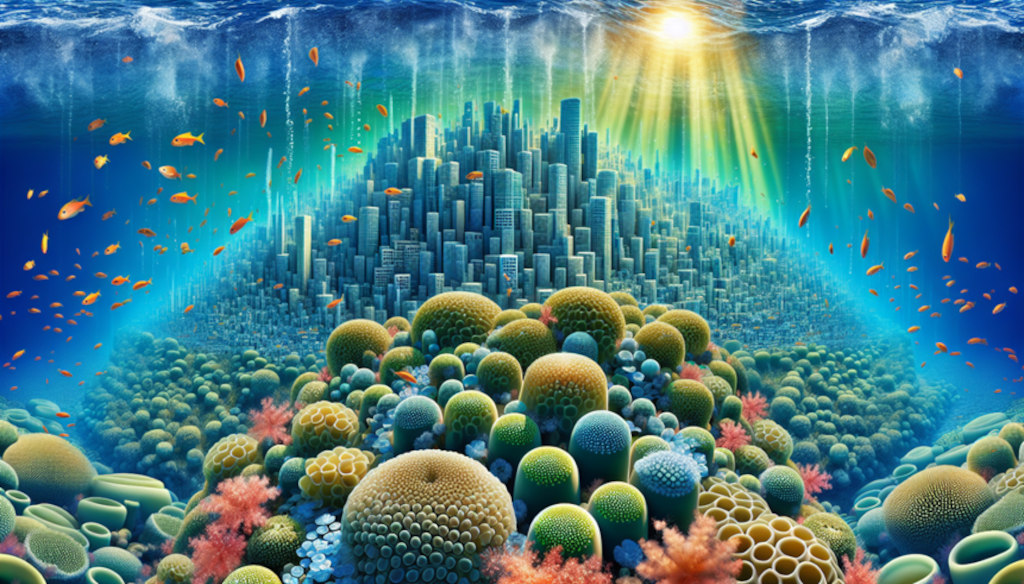Imagine building a skyscraper—without cranes, without concrete, and in the middle of the ocean—one millimeter at a time. That’s what corals do. Not once, but over centuries, they have created underwater cities teeming with life.
If you’ve ever wondered how these spectacular reefs come to exist, you’re not alone. It turns out, their growth is nothing short of miraculous—and surprisingly complex. But don’t worry, we’re breaking it down in a way that inspires serious awe (and maybe a little wanderlust).
Meet the tiny architects of the sea
You might think of coral reefs as giant rocks, but they’re actually made by tiny animals called coral polyps. Each one is just 1–3 millimeters long—about the size of a sesame seed—yet together they achieve something no single sea creature could ever dream of alone.
Here’s where the process kicks off:
- It starts when coral larvae drift through the ocean and settle on a hard surface—usually rock.
- Once attached, they begin to build limestone “apartments” by secreting calcium carbonate beneath themselves. Think of it like pouring cement, except they do it with their own bodies.
- Through asexual reproduction, new polyps bud from the original, cloning themselves to expand the colony.
- Sexual reproduction also plays a role: many coral species release eggs and sperm together during synchronized mass spawning events (yes, this happens during full moons and warm nights!). Fertilized eggs develop into new larvae, which can float away and start brand-new colonies elsewhere.
The secret engine: a magical plant-animal partnership
What fuels all this growth? Here’s where science gets poetic.
Corals share their tissues with microscopic algae called zooxanthellae. These partners photosynthesize, converting sunlight and carbon dioxide into sugars—nutrients the coral needs to grow. In return, the coral provides the algae with protection and essential compounds. It’s one of nature’s most successful symbiotic relationships—and it only works where sunlight can reach.
That’s why most reefs flourish in shallow, sunlit, tropical waters.
Real-world experiments: coral growth in action
Scientists have studied coral growth for decades, and the numbers are eye-opening.
- Massive corals (think big, dome-shaped structures) grow about 0.3–2 cm per year.
- Branching corals (like the fast-growing Acropora) can grow up to 10 cm per year.
- To grow something like Australia’s Great Barrier Reef? That takes thousands—even millions—of years.
In lab experiments, researchers have used aquarium tanks to simulate changing water conditions. When they slightly lower the water temperature or reduce light levels, coral growth often slows or stops entirely. This tells us just how sensitive these creatures are to their environment.
The fragile equation
Successful coral growth depends on a perfectly balanced cocktail of conditions:
- Warm water, typically between 23–29°C (73–84°F)
- Plentiful sunlight for algae to photosynthesize
- Clear, shallow waters without pollution or too much sediment
- Stable levels of calcium and carbonate for building skeletons
- Gentle water movement, bringing in nutrients and oxygen
Change even one variable—say, rising ocean temperatures or ocean acidification—and the whole system can collapse. That’s how coral bleaching happens: the algae vanish, taking with them the coral’s main food source. Without this lifeline, corals starve and often die.
A slow-motion miracle worth protecting
Now that you know how corals grow—patiently, symbiotically, and against all odds—you start to see reefs not just as pretty places to snorkel, but as living monuments of survival.
So next time someone asks, “How do corals grow?”, you can say: with time. With light. With love, in a way. And a whole lot of teamwork, on a microscopic scale.




Leave a Comment